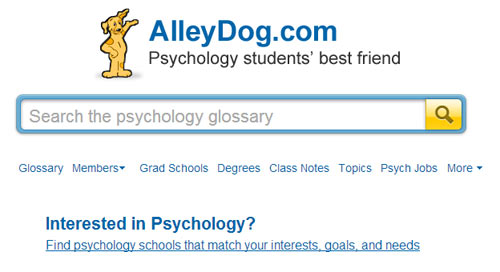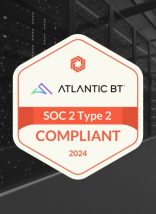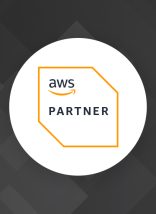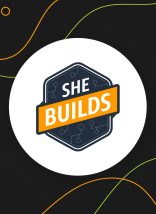
Open Office Hours Friday With Marty
When: 11:00 a.m. – 2:00 p.m.
Where: Atlantic BT Center (across from Macy’s Crabtree)
RSVP: First come, first served – tweet @Atlanticbt #FreeFriday & your date
Don’t Forget: Free Internet Marketing Saturdays
.
First Free Internet Marketing Open Office Hours Friday
Just concluded our first Open Office Hours Friday. Spent a couple of hours discussing my friend Doug Kaufman’s website AlleyDog.com. AlleyDog.com is a cool website Doug built when he was in college as a resource for psychology students.
When anyone asks me about a website, I want to know these things:
Marty’s Website Scorecard For AlleyDog.com
AlleyDog.com HomePage Google PageRank (PR): 6 (this is excellent, 10 is top)
Inbound Links: 407 (this is a tad anemic for a PR6, explained below)
PageSpread: 7,000 pages (use site: on Google to see pages indexed)
Google #1 Listings (absolute, i.e., no float): AlleyDog.com has many #1 listings.
I can know everything an Internet marketer needs to know from these numbers. For example, I see AlleyDog.com’s PR6 and only 407 inbound links (Alexa), and I know that some of those inbound links are very special. I’ve been an Internet marketer long enough to know why 407 inbound links (root domains, not total inbound links) can generate a PR6 too – educational links.
AlleyDog.com lives in the .edu space. It doesn’t get more authoritative or trusted than .edu for Google. One PR5 .edu is worth an army of non-.edu’s PR4’s. The more trusted the websites linking to you, the more trusted your website is for Google.
I also know with that many Google #1’s that Doug understands the Q&A goldmine. Nothing stronger than a glossary to rocket your pages to the top of the listings. His glossary is rocking traffic and has many, many top listings. We discussed how to make those pages more social to preserve the rank even when under attack.
We also discussed how to build revenue for AlleyDog.com. I made a few points that regular readers of ScentTrail Marketing or my posts on Atlantic BT will recognize:
- User Generated Content (UGC) – the “More, Faster, Better“ thing.
- Platforms vs. Websites – have to have a place, a HIVE, for UGC to multiply and grow strong.
- Authority Content – AlleyDog.com is solid here, but MORE would be good (see UGC).
- Social Support – Social signals confirm and elevate content.
Becoming a Social Business
“My head is spinning,” Doug said at the end of our two hours. I get that reaction frequently (lol). One of the most interesting discussions was how AlleyDog.com can become a social business. We discussed the overt vs. covert signals websites send, a favorite topic (See “Your Website Communicates Non-verbally Here’s How” on ScentTrail Marketing).
AlleyDog.com is currently a lecture site. No email subscription form and only a Facebook Like widget below the fold means AlleyDog.com wants to share information more than create community. I shared how dangerous it is to be a lecture website, even a great one, in a social and mobile age.
I suggested Doug tip his toe in with a contest like our Curation Contest from last year. Here is the phased approach I used to create Atlantic BT’s Curation Contest last year (and that I’ve used many other times) :
I. Call for Entries – need a landing page outlining contest terms and criteria and an entry form.
II. Curate entries into a group of “semi-finalists”.
III. Social Competition Phase – use wisdom of crowds community voting to curate down to a handful of finalists.
IV. Some Expert Board picks winners.
V. Memorialize in some permanent way (profiles on your website – I still owe our semi-finalists this, sorry guys).
I learned some important B2B Marketing Tips from our successful Curation Contest including:
- Include a “Download the Content” landing page so you don’t lose qualified leads.
- Develop relevant “white paper” or video content that move qualified leads off the contest and into your nurture track.
- Never let community voting award Grand Prizes (too much spam, and you miss another marketing opportunity to market the experts. We fixed this in our $25,000 Mobile Grant Contest).
- Mobile is CRITICAL, especially in the voting stage.
- Moneyball happens at the social voting stage, so make sure your website is ready to FLY when 10,000 people are all trying to vote at one time. May want to double or even triple the size of your pipe and be sure to test the page under LOAD. An alternative is use an edge network like Amazon’s or Akamai to cache the VOTE NOW page).
- Most valuable, long term, is the permanent home of winners via profiling. I fell down on this, but you shouldn’t, because it sets the stage to repeat and continues your strong connection to players.
1:10:89 Rule
If you Google “1:10:89 Rule”, I think ScentTrail Marketing still comes up first (depending on the float). The rule is simple and frustrating but beyond important if you are a content marketer (and who isn’t, now). 1% of your traffic will contribute meaningful content, 10% will vote on the content created by you, and the 1% and 89% are important but form the silent majority of your website.
This means ANYONE who votes, shares or comments is beyond valuable to your revenue dreams. Five years ago, User Generated Content (UGC) was important; now it is beyond critical. UGC and social signals are the game you play. How YOU feel about something matters some, but how THEY (your customers or visitors) feel about you, the products you sell and the content you create is THE GAME.
Social signals are important for many reasons BEYOND Search Engine Optimization (SEO) such as:
- Social signals (LIKES, Shares and other people who like X also like Y) create LIKE ME connections.
- Social signals confirm or deny what you are saying, so they legitimize your marketing.
- Social signals are the fastest feedback loop you’ve got.
- Where social signals go, MONEY follows.
4 Levels of Social Signals
There are 4 Phases to becoming a social business online:
- Create a cool UGC Contest to get your feet wet and drive traffic.
- Add in a social share widget.
- Solicit UGC via comments and reviews.
- Gamify it all.
If creating a cool UGC contest as describe above is Phase One social, then making sure every page has the ability to be liked and shared via a social signal widget such as AddThis.com is Phase Two Social. Best application of social shares for my money is Mashable.
Mashable added a “total” number, and that is masterful (Mashable Total Social Shares Example). Slap a SHARE widget all around. Remember you want the POST shared and your website LIKED and SHARED too, so set up places to do both.
Phase Three Social is actively seeking reviews and comments. WordPress does a good job, and I’m sure there is a plugin to take your comments and reviews to the next level. I used PowerReviews and Bazaar Voice as a Director of Ecommerce and liked them both. As Doug pointed out, those are SaaS applications he can’t afford. I don’t have direct experience with a good SaaS to help here, so will look into it and then curate an answer in.
Phase Four is adding a gamification layer to use social incentives to drive engagement and content creation (read “Gamification: Winning Hearts, Minds and Loyalty Online“ for more).
Not hard to see why Doug’s head was spinning, but becoming a social business and then, almost at the same time, a mobile business is critical to success. Social and Mobile have been combined into SMobile because everyone wants something to do while standing on the Starbucks coffee line.
If AlleyDog.com can gamify its User Generated Content creation via mobile, all the better.
Mobile tends to go drip, drip, drip and then FLOOD. This means if your mobile traffic is less than 5% and so you think the mobile revolution doesn’t apply to you, you are WRONG (read our drip, drip flood Mobile story “The Mobile Revolution Arrives at Atlantic BT“).
Two Last Notes
Doug was frustrated that his Q&A area didn’t get more traction. Q&A areas are like a garden. They need a lot of tending before they bear fruit. Critical components of Q&A include:
- Contributor Profiles – who is providing what input and how legitimate are they?
- Social Rewards – Must gamify Q&A, see my friends at AnswerHub.com for a great SaaS to help.
- Seeded Content – If Q&A is a ghost town, it is on YOU not THEM, but make sure you seed content in.
- Consistent Social Support – Be sure to Tweet and curate cool things that happen in your Q&A area as that drives more engagement and content.
The Silver Bullet Problem
The other thing we discussed is the lack of a silver bullet (See “Think Like an Internet Marketer: Silver Bullets and Barking Dogs” for more). Doug really wanted me to tell him the ONE THING he can do to win.
Sorry, Internet marketing is about spreading the board, hedging your bets and diversifying your digital assets. Once you see a vein of gold, by all means MINE IT, but if I could tell Doug or anyone reading this post where the gold was…. Well, I would be on a beach with a frosty beverage, a well dented lounge chair and a big guy named LARS bringing whatever my many friends and I needed (actually, I would NEVER spend money this way as long as cancer isn’t cured, but you get the idea).
Now your head is spinning too, right? Cool, then my work here is done.
Rock on and have a great weekend. We are going to have a ROCKING time tomorrow at my Free Internet Marketing Consulting Saturdays with @1918 (Phil Buckley) talking SEO and Mark Traphagen discussing Google AuthorRank.










